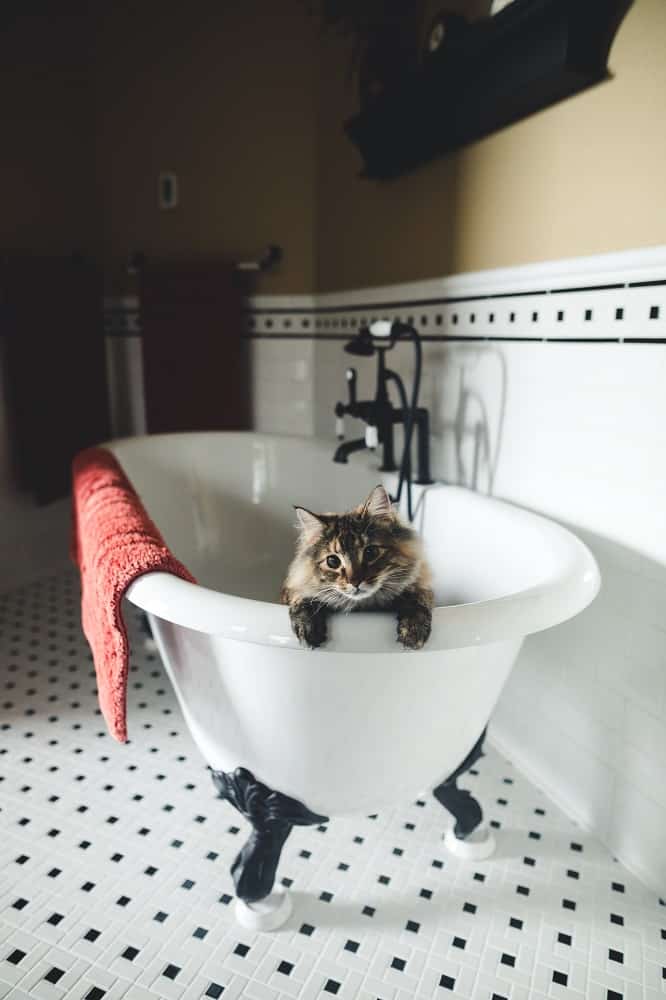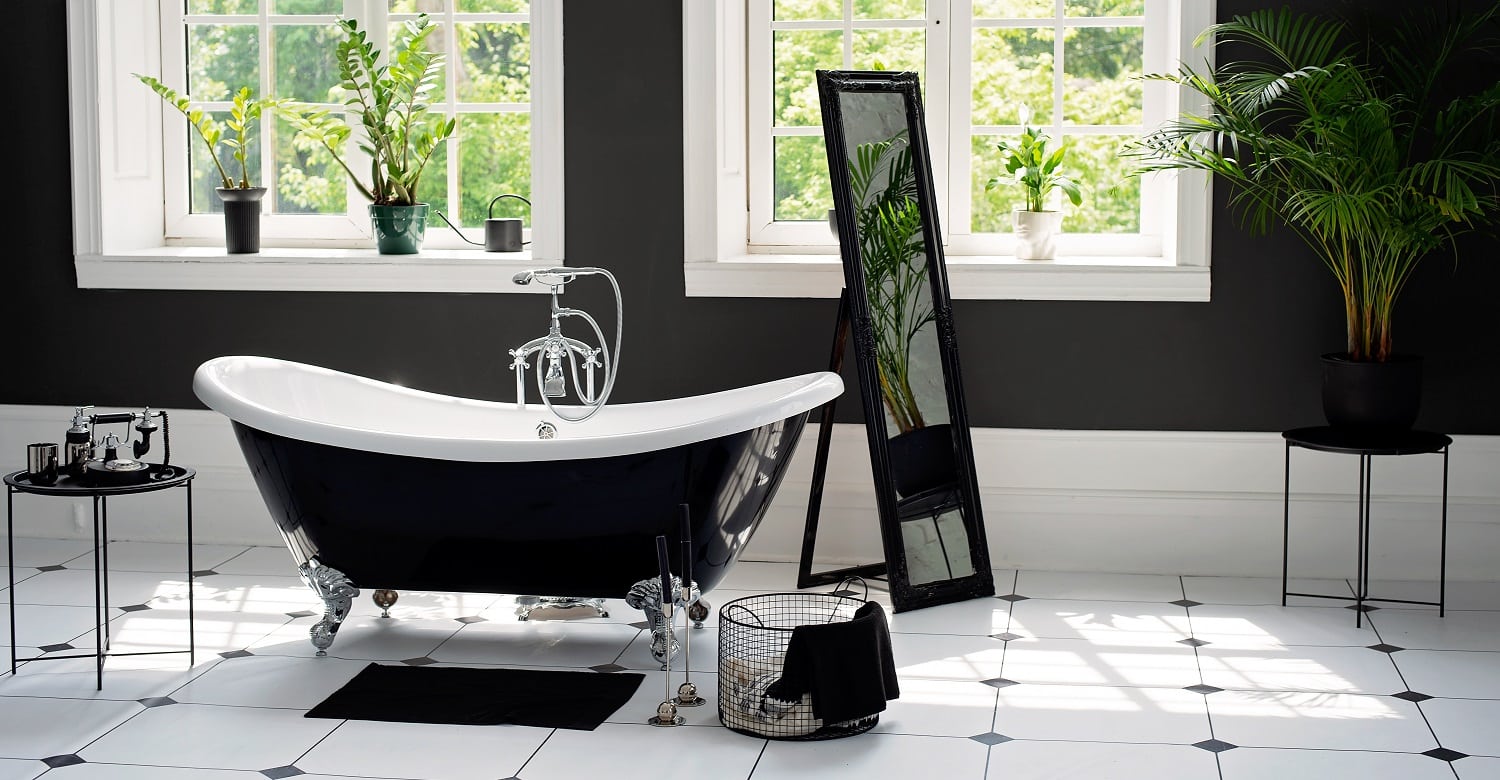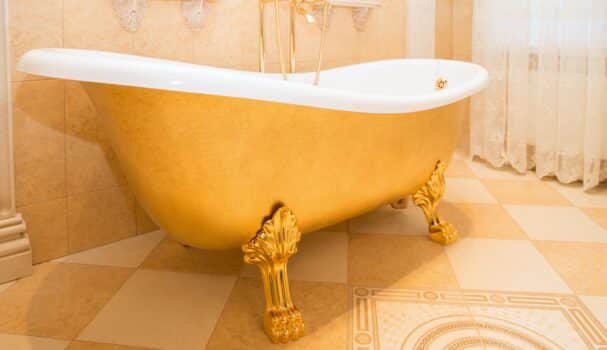Have you noticed the floor joists under your beloved bathtub? Are they looking nasty and rotten? Well, it’s time to get them fixed.
Since water exposure in a bathroom is inevitable, there is always a high risk of water damage to floor joists. However, simply ignoring it won’t make the problem go away. Instead, you need to fix it immediately, before the damage spreads.
On noticing extensive water damage and rotting, you may think that you have no choice but to call a contractor and replace everything. However, if you have the right tools and enough carpentry skills, you can do a good job fixing it yourself.
So, without any further ado, let’s get right to it!
How to Fix Rotten Floor Joist Under Bathtub
How to Recognize Rotten Floor Joist Under Bathtub

It’s not always easy to recognize if the floor joist under your bathtub is damaged or not. That being said, you don’t need an expert eye to identify some tell-tale signs of damage. Here are a few things that you need to look out for. These will immediately tell you when water damage has occurred, and you need to fix or replace the area.
-
The Tub Level
The signs of a rotten floor joist are not always immediate. One of the ways in which you can check this is by observing the area underneath the bathtub. You may notice that the tub is not entirely level – it may look misaligned, or even sunken on one side.
If the area under your bathtub is inaccessible to you, don’t worry; there is another way.
You can get into your tub (without filling it with water) and make small hopping or sliding movements. It goes without saying, but you must be very careful when doing this. If you notice the tub moving or sinking, it may indicate a weakening of the floor joists.
Additionally, look out for cracked caulk or grout. It is a good sign of water damage and a rotten joist.
-
Water Stains
Look out for water stains on your bathtub. If you notice any, it may be a good indicator that the specific area remains damp for long periods. Consequently, the area under the tub may also be exposed to moisture and dampness. Over time, it is bound to lead to water damage and cause the floor joists to rot.
-
Slow Leaks
Observe any slow leakages under your faucet, sink drain or bathtub. Depending upon how long the leak has been persisting, the floor joist under your bathtub may have started to rot or is already rotten.
-
“Bouncy” Floors
Although the term sounds humorous, this is one of the most common signs of water damage on your floor joists. You may notice the area around your tub to act slightly ‘bouncy’ when walking on it. This ‘bounciness’ is a clear sign that the wooden joists under the subfloor are rotten, and thus, weakening.
-
Unusual Increasing Humidity
It is relatively easy to miss this sign, or even misinterpret it as something entirely different. An unusually increased humidity level in your home may be a sign of rotten floor joists and water damage. But how exactly does this work? Let us explain.
The wood rot fungus, which grows under your home’s crawl space, thrives in moisture and humidity. They feed off the dampness, which is caused due to the water damage under your bathtub.
Due to air movement in your home, the humidity being created under the subfloor area can eventually move its way up and travel throughout your home. Subsequently, you may notice the humidity levels in your home suddenly rising, with no other explanation.
If you notice that this humidity is particularly out of season or does not match the humidity level outside your home, it is a clear sign. This humidity may be caused due to stagnant water in your crawl space. It may also be because of a leak in your walls or floor.
-
Musty Odors
Your home will inevitably have a variety of odors. From cooking smells to the occasional stenches; these are all common household smells. However, if you notice musty odors originating from your kitchen, bathroom, or even around your home, it could be a bad sign.
The fungus or mold growing on the rotting wood and joists may be the culprit. In case you notice any of these unusual smells coming from your home, that you can’t identify, you should investigate immediately.
These are some of the most common signs that you need to look out for. Of course, it is always advisable to get professional help when you are not entirely sure of the tell-tale signs and what they could mean.
How to Fix the Rotten Floor Joist Under Bathtub
The subfloor of any home is one of the most crucial architectural foundations; because it supports the first floor. This structure supports the floor joists. Moreover, it also acts as a leveled foundation for the rest of the house’s finished floors.
When this subfloor begins to show symptoms of water damage, it is imperative to start the drying and fixing process at the earliest. This is because water damage can spread like wildfire. The sooner you fix it, the lesser damage you will have to ultimately deal with.
Follow these steps to fix the rotten floor joists under your bathtub efficiently:
Step 1| Stop Any Source of Water
Before you begin fixing the rotten floor joists, you need to prepare your bathroom floor. First and foremost, stop any source of water. This means closing all taps and faucets. However, it is advisable to shut off the primary source of water as well.
Step 2| Access the Area Under the Bathtub
You can start fixing the floor joists only after you see the actual severity of the damage. For this, you need to observe the area under your bathtub.
Put on your safety gear – safety goggles, gloves, a dust mask, and a work light. Now, access the area under the subfloor by going through the crawl space at the side of your house.
Alternatively, you can also expose the subfloor area. Do this by first cutting through the carpeting or vinyl on your bathroom floor. Then, using the appropriate tools, remove the baseboards under the affected areas only. Keep a lookout for any other sites where you might find water damage, so you can remove them together and fix them.
Step 3| Mark the Area
Using a chalk or marking pen, properly mark all the areas of water damage. Measure the distance from the rotten joist’s ends to where they attach on a grinder or sill plate.
Next, you can go ahead and mark the areas on the replacement joist. At this point, it is vital to ensure that all your measurements are accurate; otherwise, they will not fit properly once you are done cutting.
Step 4| Cut the Subfloor
Using your circular saw, carefully cut out all the areas of rotten joists and damaged subflooring. Make sure you have your protective gear on at all times. Set your circular saw to a depth of 1 inch for best results. Cut as close to the markings as possible.

Step 5| Remove the Damaged Materials
Use a pry bar to remove all of the damaged parts carefully. Remember to work slowly and cautiously to avoid splintering. Remove any loose nails as well, as it may cause damage later on. Have a heavy-duty trash bag with you where you can throw in all of these materials. Finally, use a shop vac to clean up any dust and debris around the area.
In case you find mold, mildew, and other such unwanted elements, you need to have them removed carefully.
Ensure that you leave the area completely neat and clean before you begin the next step.
Step 6| Allow It to Dry
It would help if you gave adequate time to the damaged area to dry. Ideally, give it a few days in the air to dry off completely, because any moisture or dampness will reinforce any damage.
Additionally, you can use a dehumidifier or a few large fans to hasten the drying process.
Step 7| Reinforce the Floor Joists
Once the floor and joists have completely dried, you can use 2 x 6-inch boards to side the joists carefully. Alternatively, you may also use lumber blocking for spanning the spaces. Doing this will automatically strengthen the joists which have been damaged by water.
Step 8| Install the New Subfloor
This is the final step of fixing your floor joists. Once you have strengthened the floor joists of the damaged area, you need to start laying down the new subfloor. To do this with acute accuracy, you need to ensure that you have all the correct measurements.
It should be noted that the new subfloor material is likely to expand. This is why you must keep a distance of 1/8th inch between the new and old material. You can use deck screws, or even 8D galvanized nails to fasten your new subfloors.
However, you may want to finish this work quicker and with more efficiency. In that case, you may consider using a nail gun or a rapid-load screw gun.

Final Words
Water damage is hazardous for your home. The worst part about it is how fast it spreads throughout the rest of the house. To stop this spread, it is essential to take action at the earliest.
Now that you know what signs to look out for, go ahead and check your home and bathroom carefully. Of course, having just one or two signs is not a guarantee that you have damaged floor joists! To be sure, you can always get professional advice.
We hope our step-by-step guide on how you can fix rotten floor joists under your bathtub was helpful. In case you need any more help, you can always reach out to us!
With that, we will sign off. Until next time!
Related Articles
13 Best Bathtub Faucets Right Now
10 Best Bathroom Exhaust Fans Right Now
13 Best Bathroom-Led Mirrors to Consider Today
17 Best Bathroom Design Tool Options Today


